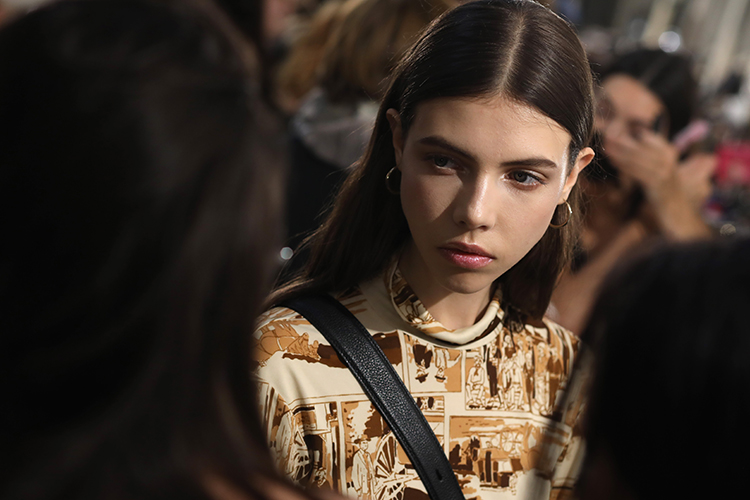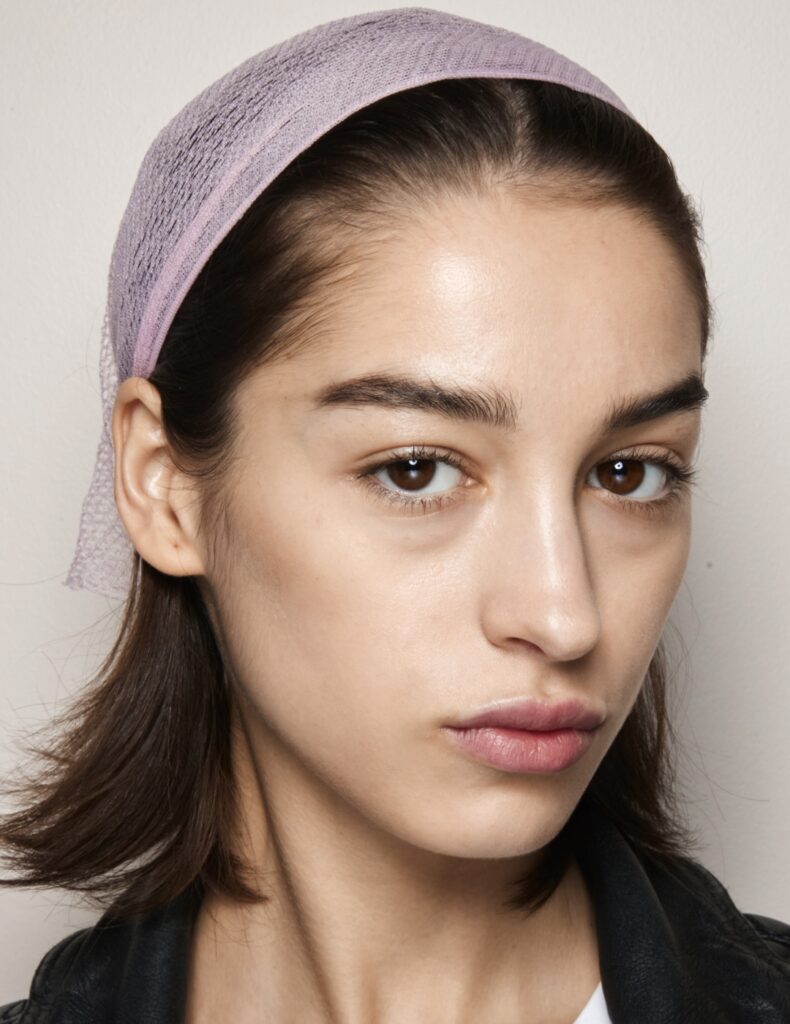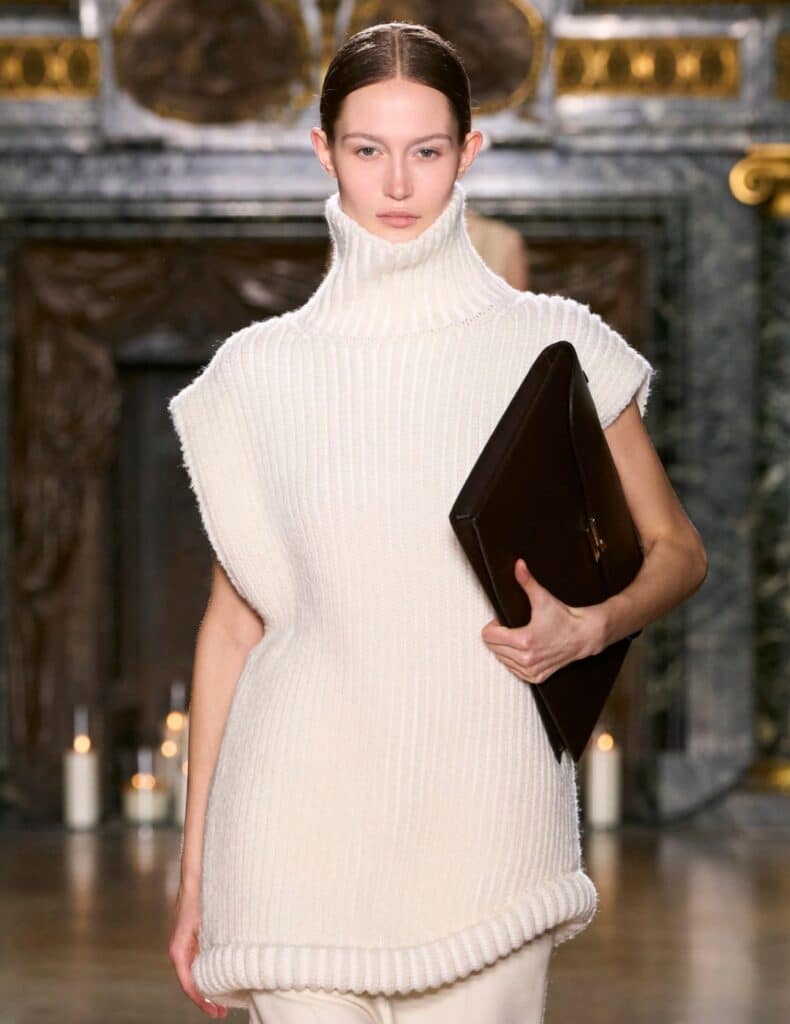“It’s about ageing beautifully, not freezing you in your tracks”
Without a crystal ball, it can be difficult to predict how your skin will look in 5, 10 or 20 years from now. But chances are, you’ll probably look back and wish you did more to protect your epidermis. And as we discover more about the body’s natural ageing process, the skincare industry is shifting its focus from those who already have wrinkles to those who don’t have them yet. From millennial-targeted treatments to the ultimate skin fixes, we explain what you should be doing now to protect your future skin.
To find out how to care for your skin in your 20s, 30s and 40s scroll below:
“In your twenties, you have lovely plump skin with lots of collagen, and the subcutaneous (under the skin) fat pads that support the face are firm and perky, giving a youthful, fresh look to the face,” says Dr Catherine Stone of The Face Place.
A huge amount of our lifelong UV damage happens in our twenties, which is why it’s vital to begin your preventative regime now before the collagen production slows and the damage really begins to show. “Looking after your skin in your twenties will pay dividends as you age,” says Catherine. Your biggest concern at this time is most likely to be hormonal acne and irregular oil production.
Sunscreen:
It’s the single most important anti-ageing trick and all it takes is a simple slap of cream. “You want to prevent that sun damage occurring because it’s the number one cause of ageing,” says Marianna Glucina of About Face. “Get the best broad-spectrum sunblock you can buy and wear it 365 days a year.” Whether you use a chemical or physical (mineral) sunscreen is up to you, however, many skincare experts prefer physical sunscreens (containing zinc oxide and titanium dioxide) over chemical. “When you wear a chemical block you’re preventing burning, but you’re still absorbing the sun’s rays, which causes free radical damage, therefore still ages the skin,” says Marianna.
Niacinamide (Vitamin B3) or LED light treatments:
Hormonal spots are a common concern in your twenties, and among vitamin B3’s many benefits (improving the epidermis, reducing pigmentation and boosting collagen production) it’s also brilliant for regulating oil flow, which in turn reduces acne. Medical LED light treatments, such as Omnilux, destroy the bacteria that cause acne, ease inflammation and aid the body’s natural healing process.
WATCH: Are you making these common mistakes when you cleanse your face?
Gentle vitamin A:
The only ingredient that’s capable of actually reprogramming cells, vitamin A not only slows down the breakdown of collagen and elastin, it also increases cell turnover (natural exfoliation) and repairs existing UV damage. There are a number of different types of vitamin A, but in your twenties, sources such as beta-carotene (also found in carrots) or retinyl palmitate are recommended, as they’re gentler on your skin than the more potent retinol.
Antioxidants:
We’ve all been told about the benefits antioxidant-rich foods have for our general health, but antioxidants are also imperative for skin health. Antioxidants protect the skin from environmental damage by working from the inside out, which in turn can help reduce the development of fine lines and wrinkles. There are many effective antioxidants for the skin, from green tea and grape extract to vitamin C and others you’ll have trouble pronouncing. Research shows that skin does better with a range of antioxidants rather than just one, so go ahead and load up on them.
Baby Botox:
We use more than thirty facial muscles to express ourselves each day. Some of this muscle use bashes the skin together, which over time breaks down the collagen fibres, creating wrinkles. Catherine from The Face Place uses Botox differently from most practitioners, strategically placing incredibly small doses of it into certain muscles that she observes bashing together where wrinkles are likely to form. Turning the muscles down, without turning them off, Baby Botox stops new wrinkles from forming and also gives the skin space to repair its existing damage. “The person still has significant movement and expression, but not so much expression that the muscles bang the skin together and break down the collagen fibres,” explains Catherine.
Try:
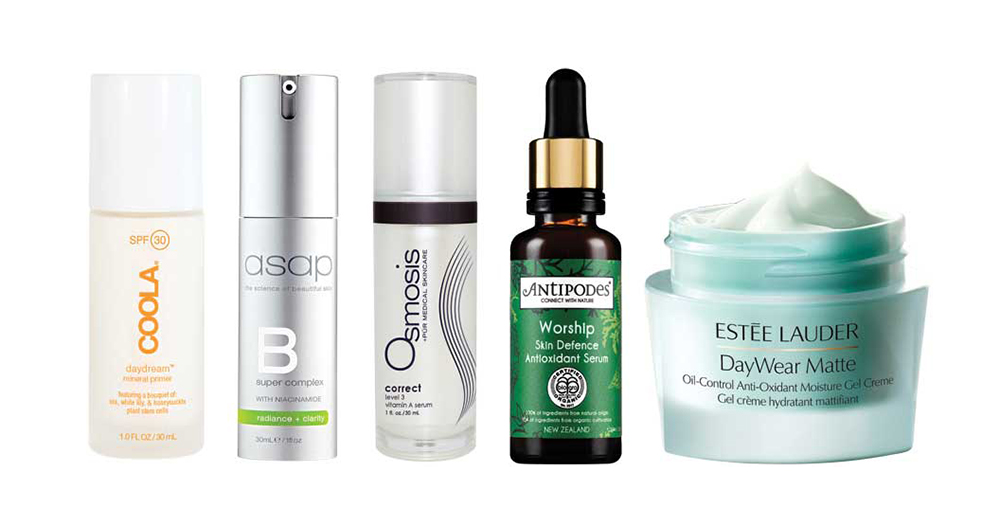
Left to right: Coola Daydream mineral primer and SPF30 sunscreen, $65; asap B super complex serum, $115; Osmosis correct treatment A serum, $141; Antipodes worship antioxidant skin defence serum, $59; Estée Lauder day wear matte, $78.
As you reach your late twenties and early thirties, your skin begins to take a downward turn as collagen production starts to slow. It’s about now that you’ll start noticing fine lines, particularly around the eyes and forehead. “The skin starts to thin, especially around the eyes, and the loss of subcutaneous fat pads in the mid-face, under eye hollows and mouth corners start to make us look tired and drawn,” says Catherine. “By the early thirties you’re starting to see the effects of too much sun exposure, so you’ll often have some pigmentation happening as well,” explains Marianna. Your focus should be on hydration, stimulating collagen production and reducing pigmentation.
Moisturiser:
Hydration is vital now, so invest in a good moisturiser, eye cream and night treatment, ideally with hyaluronic acid as it’s brilliant for retaining moisture.
Vitamin A:
If you weren’t using a vitamin A serum in your twenties, it’s time to start now. Depending on your skin type, a stronger vitamin A (retinol) can be introduced but, like all active ingredients, it needs to be introduced slowly. Vitamin A is sensitive to UV light so should only be applied at night. It’s also essential when using vitamin A that you wear sunscreen daily, as skin becomes more UV sensitive.
Vitamin C:
The most potent of antioxidants, a vitamin C serum is integral now as it will work to repair the damaged skin cell DNA that results in pigmentation.
Collagen Banking:
Just as the name suggests, collagen banking is the process of saving collagen so your body can use it at a later date. This is done through a process of irritating the skin and creating micro wounds, forcing the body to produce a burst of collagen in order to heal itself. The theory is that by building up and replenishing collagen in the skin in your twenties and thirties, you won’t lose as much structural support when you reach your forties and fifties.
Although the collagen results are long term, you’ll also notice immediate results in the form of skin rejuvenation, brightness and lift. There are a number of collagen banking treatments available. PRP treatments involve injecting your own blood’s platelets back into the skin, thus increasing collagen production and improving elasticity.
READ NEXT: Do you understand why certain skincare products have different textures?
Dermal rolling is also a needling process, utilising an instrument covered in tiny needles which is rolled over the skin, penetrating the first few layers of the epidermis. Dermal rolling is generally used in conjunction with a facial as it aids the penetration of active skincare products. This can also be successful in reducing pigmentation.
There are various fractional laser treatments that initiate collagen banking, however many of them involve downtime as your skin recovers. About Face’s Clear and Brilliant is the least invasive of the fractional laser options and can be done during a lunch break. The laser works deep into the skin creating microscopic lesions beneath the surface. “When our skin is damaged it produces collagen tissue which is stronger and firmer than before,” says Marianna. “Over a course of treatments collagen fibres are strengthened and the skin becomes stronger, smoother and firmer with improved texture.”
Dermal fillers:
If you’re beginning to notice volume loss through the mid face and chin, dermal fillers will return the plump. The injectable hyaluronic acid gel (the same naturally occurring sugar that provides your skin with volume and hydration) is inserted into key areas wherever more volume is required. “[Dermal fillers] gently restore the lost volume and lift the early signs of ageing through the smile lines and mouth corners,” explains Catherine. They can also be used to soften under eye hollows, helping you look less tired.
Try:
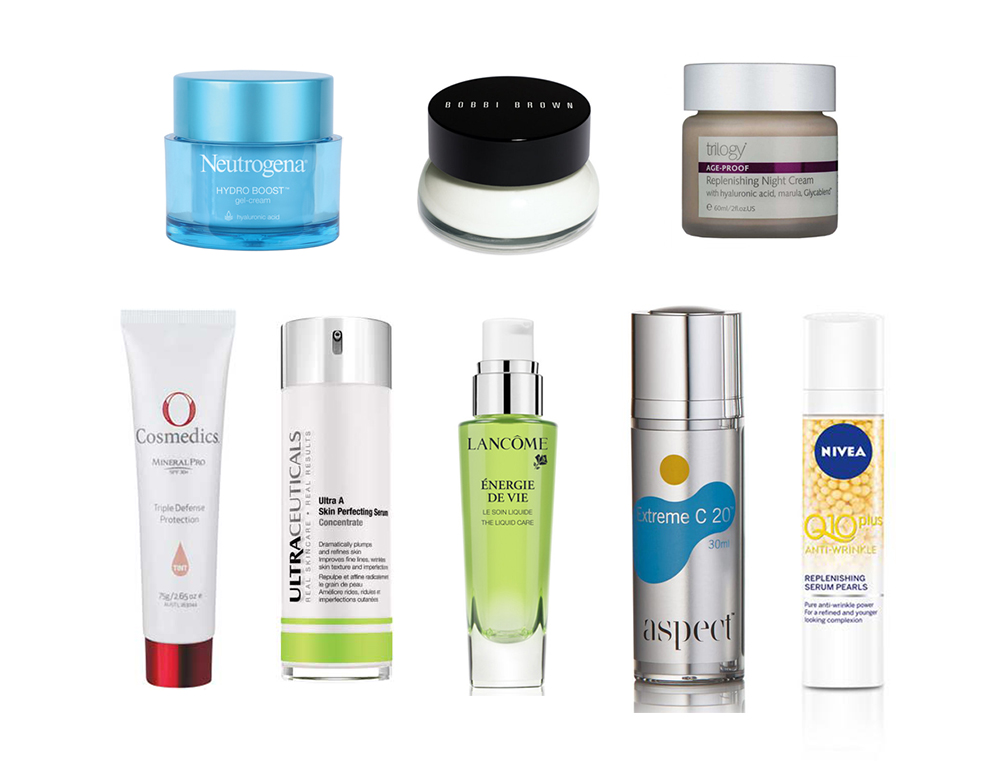
Clockwise: Neutrogena hydro boost gel cream, $30; Bobbi Brown extra repair moisturising balm, $155; Trilogy night cream, $65; O Cosmedics mineral pro SPF 30+ tint, $73; Ultraceuticals ultra A skin-perfecting serum concentrate, $152; Lancôme Énergie de vie liquid care, $85; Aspect extreme C 20, $135; Nivea Q10 plus anti-wrinkle replenishing pearls, $30.
As you hit your forties your skin begins to lose its integrity and will become drier and more fragile. Your cell turnover will begin to slow further and you may notice rough patches on the face. Volume will continue to reduce as your skin thins and you’ll notice some sagging through the mouth, chin and temples. “As your skin is thinning further you’re probably noticing more lines (unless you’ve been having regular Botox and/or PRP), especially around the lips and eyes,” says Catherine. It all sounds like doom and gloom, but don’t fret, you’ve only got two things to focus on — cell turnover and lift.
Retinol:
If you haven’t switched to retinol yet, now is the time to do so. “A stronger vitamin A, such as retinol, has resurfacing properties to improve cell turnover and reduce build-up of dead cells — minimising the ‘rough patches’ that can develop on the skin at this age,” says Catherine.
WATCH: The 5 foods that feed your skin
AHAs:
When we’re younger our skin has its own natural exfoliation process, but as we age this process slows down, resulting in a dull complexion. The most gentle and effective of exfoliation techniques, AHAs (alpha hydroxy acids) work by loosening the glue that holds dead skin cells together, resulting in a fresh glow. Try it in a mask or find it in a daily leave-on treatment.
Peptides:
Peptides aid in hydration and stimulate the cells that produce collagen to become more active.
Point Lift:
A facelift without going under the knife, the 8 Point Lift from The Face Place uses a minimal amount of dermal fillers placed in eight strategic locations to achieve maximal lift and support where you need it most.
Try:
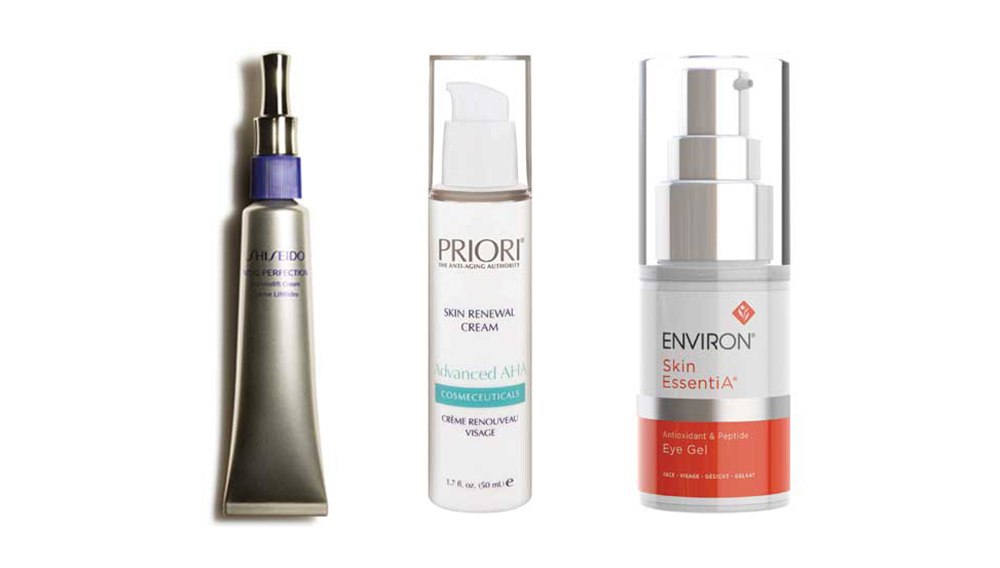
Left to right: Shiseido vital perfection wrinklelift cream, $179; Priori advanced AHA skin renewal cream, $99; Environ skin essentiA eye gel, $70.


